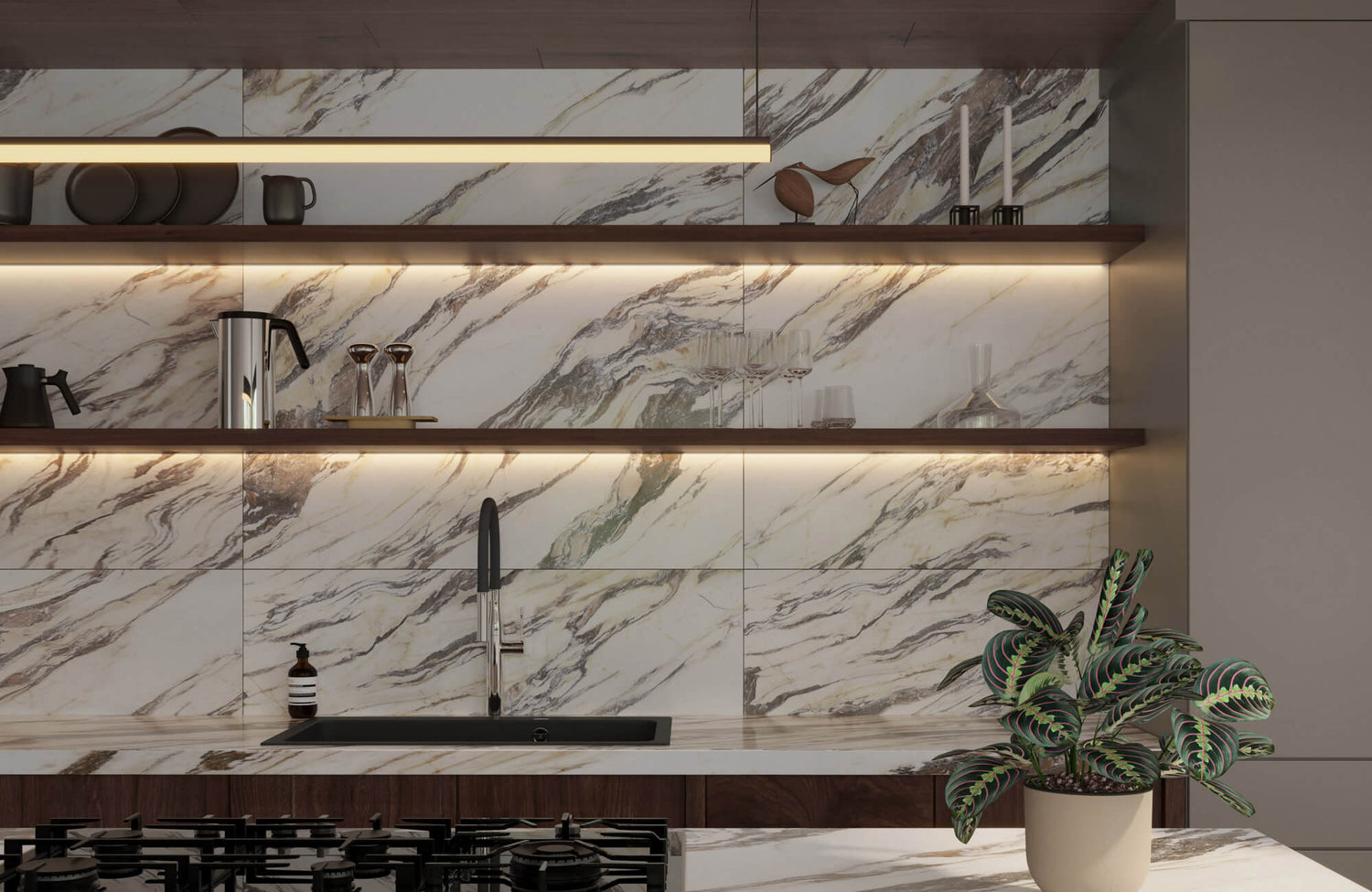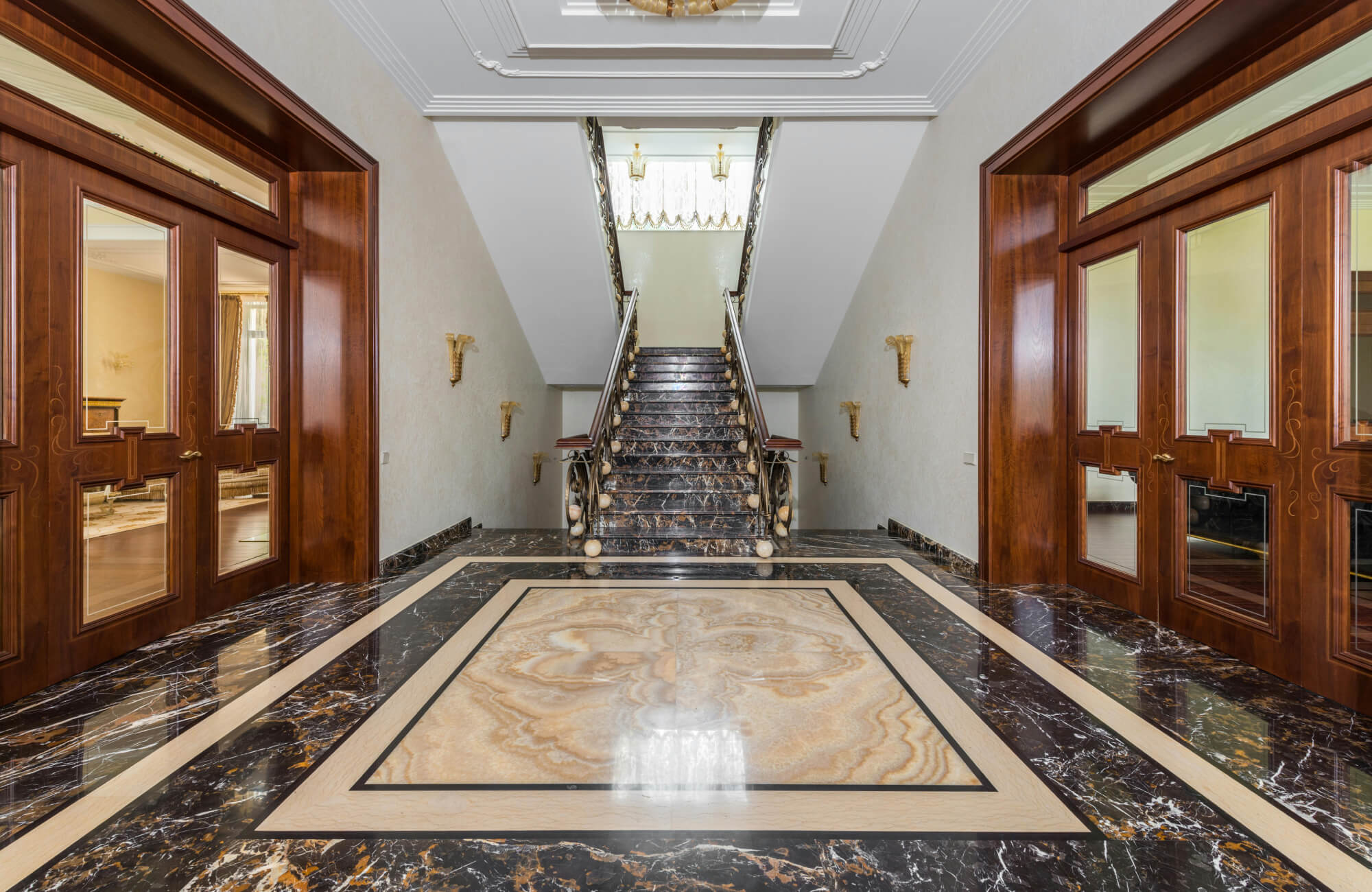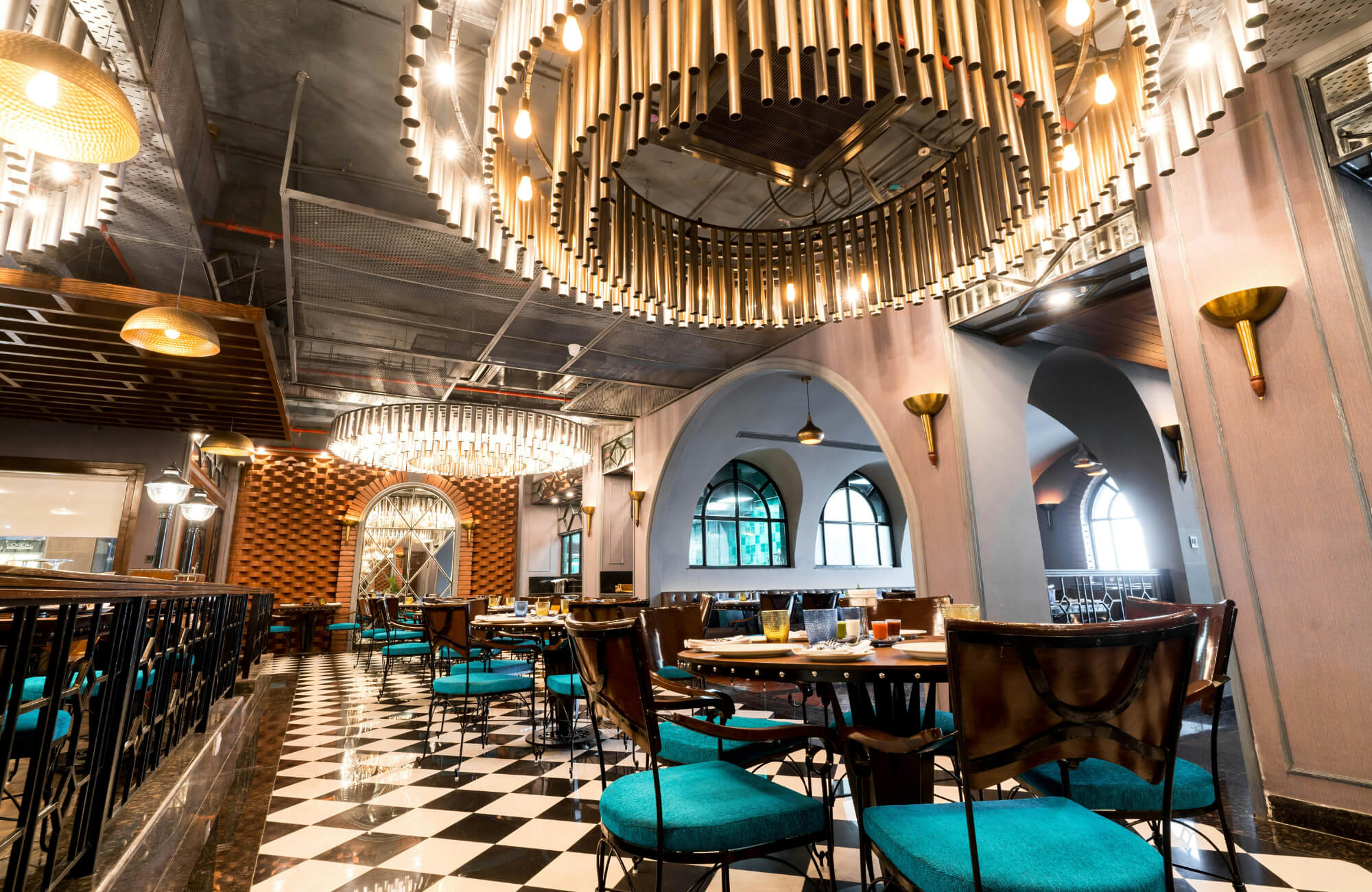Marble, with its timeless elegance and luxurious appearance, has long been a coveted material for interior design. Its distinctive veining patterns and cool, smooth surface add sophistication to any space. From kitchen countertops and bathroom vanities to flooring and accent walls, marble has been the go-to choice for homeowners and designers looking to elevate their aesthetic.
However, the beauty of marble comes with a significant drawback—its susceptibility to stain. Spills, acidic substances, and everyday wear and tear can quickly mar the pristine surface of marble. This inherent weakness has prompted many to seek alternatives that offer the same timeless elegance with added durability. Marble look tiles have become a popular choice, as they capture the sophisticated appearance of marble while providing superior stain resistance and easier maintenance.

Marble’s Appeal and Its Maintenance Hurdles
Marble, a metamorphic rock formed under immense heat and pressure, is primarily composed of calcite, a mineral responsible for its characteristically smooth texture and sensitivity to acidic substances. The beauty of marble lies in its unique veining patterns, created by trace minerals and impurities present during its formation. These natural variations in color and pattern contribute to marble’s luxurious and one-of-a-kind appeal.
The Porous Nature of Marble
However, marble’s porous nature is its charm and Achilles' heel. The tiny pores within the stone allow liquids to seep in, leading to unsightly stains. Common culprits include wine, coffee, tea, and other pigmented beverages. Oils and grease, often found in kitchens, can also penetrate the surface, leaving behind stubborn marks. Additionally, acidic substances like lemon juice, vinegar, and certain cleaning products can etch the marble, creating a dull, cloudy appearance.
Challenges in Marble Maintenance
Maintaining marble requires diligent care. Regular sealing is essential to protect the stone from stains and etching. Sealers fill in the pores, creating a barrier against liquids. However, sealants are not permanent and typically need to be reapplied every few years. Cleaning marble also demands attention. Harsh chemicals can damage the surface, while acidic cleaners will exacerbate etching. Gentle, pH-neutral cleaners are recommended for regular maintenance.
Despite the challenges associated with marble care, its undeniable beauty continues to captivate homeowners and designers. The luxurious feel, the cool touch, and the elegance it imparts to space are hard to match. However, the desire for a low-maintenance alternative without sacrificing aesthetics has fueled the search for marble look materials that offer the same visual appeal with improved practicality.

Porcelain Tiles as a Superior Marble Alternative
Porcelain tiles are known for their durability and design versatility, making them a popular choice for interiors. Their specialized composition and production process create a material that offers both visual appeal and reliable performance.
Manufacturing Process and Technology
The production of porcelain tiles begins with the selection of high-quality clay and minerals, which are refined and mixed to create a smooth, pliable paste. This paste is then shaped into tiles through extrusion or pressing techniques. Unlike ceramic tiles, porcelain tiles are fired at extremely high temperatures, often exceeding 2,300°F (1,260°C). This high-temperature firing process results in a denser and more durable tile than ceramic tiles. After the initial firing, porcelain tiles may receive a glaze and undergo a second firing to enhance their durability and appearance. Porcelain’s ability to mimic marble is largely due to advancements in tile technology, such as high-definition inkjet printing. This technique also allows manufacturers to recreate the intricate patterns and textures of natural marble, including the striking veining of Calacatta Antico, which is celebrated for its timeless elegance and soft, nuanced veining that evokes a classic, sophisticated look.
The Advantages of Porcelain Tiles
Porcelain tiles offer several advantages that make them a superior choice for both residential and commercial spaces. One of the most notable benefits is their high durability. Due to their dense composition and firing process, porcelain tiles are highly resistant to stains, scratches, and moisture. This makes them an ideal option for busy areas and spaces exposed to water, such as bathrooms and kitchens. A great example is the Chantel 12x24 Matte Porcelain Tile in Imperial, as shown in the photo above, which combines durability with a refined matte finish, offering both practicality and elevated style. Additionally, porcelain tiles are exceptionally easy to maintain. Their non-porous surface repels spills and stains, reducing the need for frequent cleaning and maintenance. Unlike natural stone, which may require regular sealing, porcelain tiles retain their appearance with minimal effort.
Another advantage of porcelain tiles is their versatility. They are available in a wide range of colors, patterns, and finishes, allowing homeowners to achieve various design aesthetics, from traditional to modern. As previously mentioned, porcelain tiles can also replicate the look of natural materials like marble, wood, and even concrete, providing a high-end appearance at a more affordable price. The ability to mimic these materials without the associated maintenance challenges makes porcelain tiles a popular choice among designers and homeowners. Furthermore, porcelain tiles are an eco-friendly option. Many porcelain tiles are made from natural materials and are produced with energy-efficient processes, contributing to a healthier indoor environment. Their durability also means that they have a longer lifespan compared to other flooring options, reducing the need for replacements and minimizing waste.
To confirm their suitability and viability, ordering a sample allows you to evaluate the material’s quality and aesthetics directly.

Ceramic Tiles as Another Option
Ceramic tiles provide a versatile and cost-effective solution for a wide range of interior applications. Their unique properties and manufacturing process make them an attractive option for those seeking a balance of style and functionality.
Manufacturing Process and Technology
The creation of ceramic tiles starts with mixing clay and other natural minerals to form a malleable body. This mixture is shaped into tiles using extrusion or pressing techniques and then fired at lower temperatures compared to porcelain tiles. Ceramic tiles are typically fired at temperatures ranging from 1,800°F to 2,200°F (980°C to 1,200°C), resulting in a material that is less dense than porcelain but still durable. After firing, some ceramic tiles may be glazed to enhance their appearance and protect the surface from stains. Advanced printing technology allows ceramic tiles to feature realistic designs and patterns that mimic natural materials, offering a high degree of visual appeal.
The Advantages of Ceramic Tiles
Ceramic tiles offer numerous advantages that make them a practical choice for various applications. One of the primary benefits is their affordability. Ceramic tiles are generally more cost-effective than natural stone or porcelain tiles, making them an excellent option for budget-conscious projects. Despite their lower cost, ceramic tiles still provide a durable and attractive finish that can withstand everyday use. Ceramic tiles are also known for their ease of maintenance. Their non-porous surface resists stains and moisture, making them suitable for areas prone to spills and splashes, such as kitchens and bathrooms. Routine cleaning involves simple sweeping and mopping with mild detergents, ensuring that ceramic tiles remain in good condition with minimal effort.
Another significant advantage of ceramic tiles is their design flexibility. Available in an extensive range of colors, patterns, and finishes, ceramic tiles can be used to create diverse design styles, from classic to contemporary. One notable option is the Julianna 4x12 Glossy Ceramic Tile in Carrara, as shown in the photo above, which replicates the luxurious appearance of marble with its subtle veining and glossy surface, offering a sophisticated yet practical solution for walls and backsplashes. The advanced technologies used in ceramic tile production also allow for stunning marble-like appearances, including leathered finishes that add texture and depth.

Quartz Tiles as Marble Alternative
Quartz tiles have become a sophisticated alternative to marble, offering both aesthetic appeal and practical benefits. Here's an overview of why quartz tiles can be a great choice for those seeking the look of marble without the drawbacks:
The Composition of Quartz Tiles
Quartz tiles are engineered from a mix of natural quartz crystals and resins. The quartz crystals, which make up approximately 90-95% of the tile, are combined with resin binders and pigments. This blend is then pressed into molds and cured under high pressure, creating a dense, durable tile that mimics the appearance of natural stone.
Stain Resistance and Durability
One of the standout features of quartz tiles is their amazing stain resistance. Unlike marble, which is porous and prone to staining, quartz tiles have a non-porous surface. This makes them highly resistant to spills, stains, and discoloration. Wine, coffee, and acidic substances that can damage marble have little effect on quartz tiles. Additionally, quartz tiles are incredibly durable. Their dense composition makes them resistant to scratches, chips, and cracks, making them a practical choice for busy areas such as kitchens and bathrooms. Their resilience also means they can withstand everyday wear and tear, maintaining their appearance over time.
Maintenance and Care
Maintaining quartz tiles is generally straightforward and hassle-free. Unlike marble, they do not require regular sealing and can be cleaned easily with mild soap and water, making them a low-maintenance option for busy households. Their non-porous surface also helps resist bacteria and mold growth, contributing to a cleaner and healthier environment. However, quartz tiles can be sensitive to prolonged exposure to direct sunlight, which may cause discoloration over time. In high-temperature or high-moisture areas, selecting the appropriate product and ensuring proper installation will help preserve the tile’s appearance and long-term performance.
Design Versatility
Quartz tiles are available in a wide range of colors and patterns, allowing for significant design flexibility. Manufacturers can replicate the intricate veining and color variations found in natural marble, offering options that cater to various aesthetic preferences. This versatility allows homeowners and designers to achieve a marble-like look with more consistent patterns and colors.
Making the Right Choice
Selecting the right marble look alternative depends on several key factors, including stain resistance, durability, maintenance needs, aesthetic preferences, and budget. Evaluating your lifestyle and the functional demands of each space helps ensure the material you choose performs as beautifully as it looks.
Choosing Materials for Kitchen Countertops
For kitchen countertops, which endure heavy use and frequent spills, porcelain tiles are a top contender. They provide excellent durability, moisture resistance, and design versatility, often mimicking the elegance of natural stone. A prime example is the Aniston 24x48 Matte Porcelain Tile in Calacatta Viola (displayed in the picture above), which captures the luxurious look of marble with rich veining and a soft matte finish, making it a stylish yet practical option for high-traffic kitchen surfaces. Quartz countertops are also a durable and non-porous option, highly resistant to stains and scratches, though they tend to be more expensive and may fade over time with prolonged sun exposure.
Selecting Materials for Bathrooms
In bathrooms, where moisture and aesthetics both matter, porcelain, ceramic, and quartz surfaces each offer specific advantages. Marble look porcelain tiles are especially suitable for wet areas due to their durability and stain resistance. Edward Martin’s Aniston 24x48 Matte Porcelain Tile in Carrara Bianco is a fitting choice, combining the refined elegance of natural marble with the practicality of a low-maintenance, water-resistant surface. Ceramic tiles also perform well and offer easy maintenance. For those seeking a more contemporary, seamless look, quartz is another compelling option; its non-porous composition resists moisture and mold, making it ideal for vanities and wall panels, though it typically comes at a higher price point compared to porcelain or ceramic.
Choosing the Right Flooring Option
For flooring, porcelain tiles with a matte finish are highly recommended due to their strength, stain resistance, and wide variety of design options. They perform well in high-use areas and are easy to care for over time. Ceramic tiles offer similar benefits and a wide design range, though they may not match porcelain in durability or resistance. Quartz is another stain-resistant option, but it is typically more expensive. To help you visualize how different materials will look and perform in your space, Edward Martin’s AR technology allows you to preview tile designs in real-time, making it easier to bring your flooring vision to life.
Finding the Ideal Marble Look Solution for Your Home
The allure of marble is undeniable, but its susceptibility to staining can be a significant drawback. Fortunately, a variety of stunning alternatives have emerged that offer the beauty of marble without the maintenance headaches. Porcelain tiles, ceramic tiles, and engineered stones like quartz each present unique advantages in terms of stain resistance, durability, and aesthetic appeal. By carefully considering factors such as lifestyle, budget, and desired atmosphere, you can choose the perfect marble look material to elevate your interior spaces without compromising on practicality. Consult the manufacturer for specific use and maintenance guidelines, and consider professional installation to ensure optimal performance and results.








